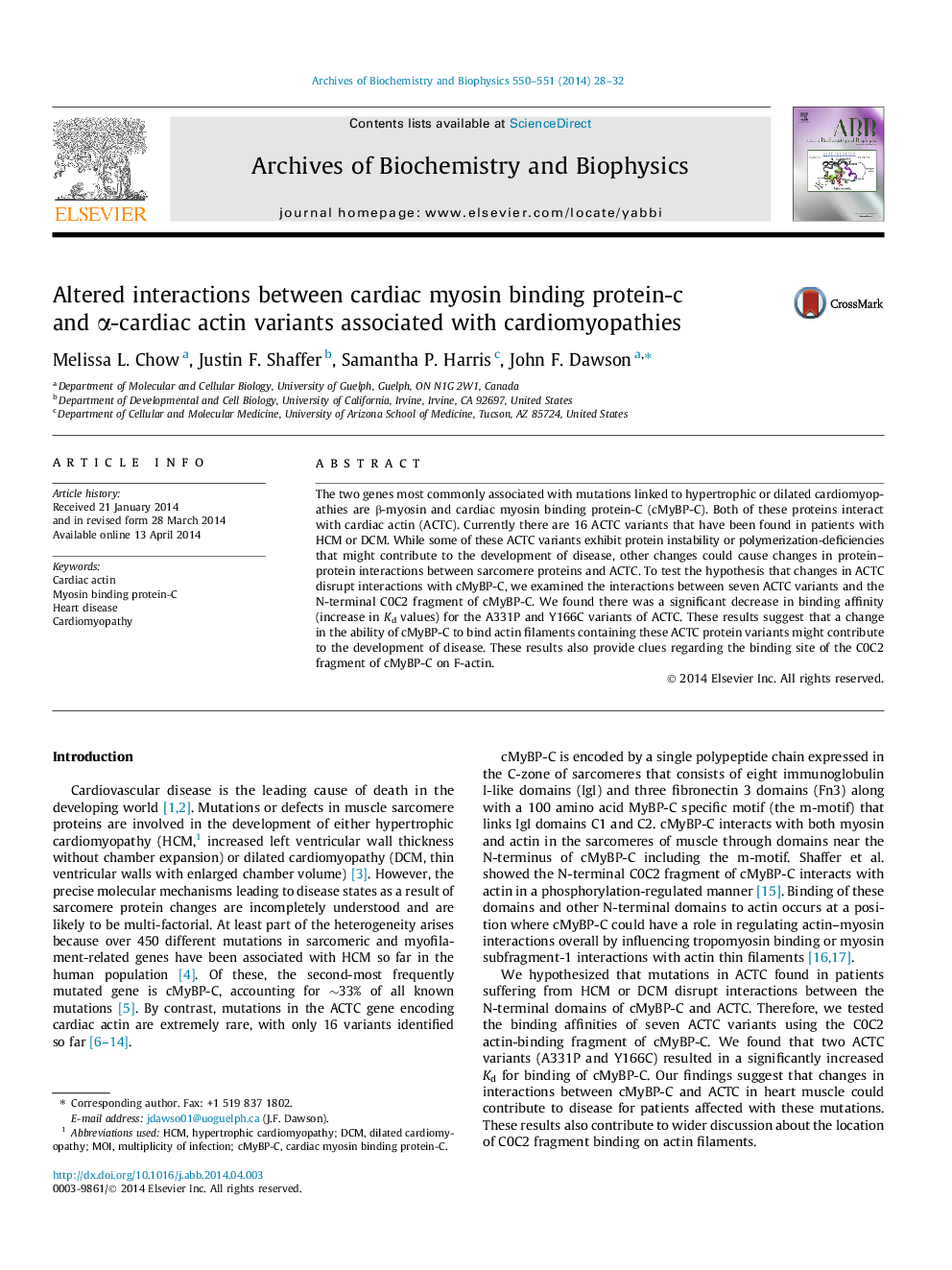| کد مقاله | کد نشریه | سال انتشار | مقاله انگلیسی | نسخه تمام متن |
|---|---|---|---|---|
| 1925155 | 1536349 | 2014 | 5 صفحه PDF | دانلود رایگان |

• Binding between 7 cardiac actin variants and c-MyBP-C C0C2 fragment were determined.
• All actin variants had about a 1:1 molar binding stoichiometry with C0C2.
• A331P and Y166C actin showed significantly reduced binding affinity.
• Changed cardiac actin and cMyBP-C binding might contribute to disease.
The two genes most commonly associated with mutations linked to hypertrophic or dilated cardiomyopathies are β-myosin and cardiac myosin binding protein-C (cMyBP-C). Both of these proteins interact with cardiac actin (ACTC). Currently there are 16 ACTC variants that have been found in patients with HCM or DCM. While some of these ACTC variants exhibit protein instability or polymerization-deficiencies that might contribute to the development of disease, other changes could cause changes in protein–protein interactions between sarcomere proteins and ACTC. To test the hypothesis that changes in ACTC disrupt interactions with cMyBP-C, we examined the interactions between seven ACTC variants and the N-terminal C0C2 fragment of cMyBP-C. We found there was a significant decrease in binding affinity (increase in Kd values) for the A331P and Y166C variants of ACTC. These results suggest that a change in the ability of cMyBP-C to bind actin filaments containing these ACTC protein variants might contribute to the development of disease. These results also provide clues regarding the binding site of the C0C2 fragment of cMyBP-C on F-actin.
Journal: Archives of Biochemistry and Biophysics - Volumes 550–551, 15 May 2014, Pages 28–32